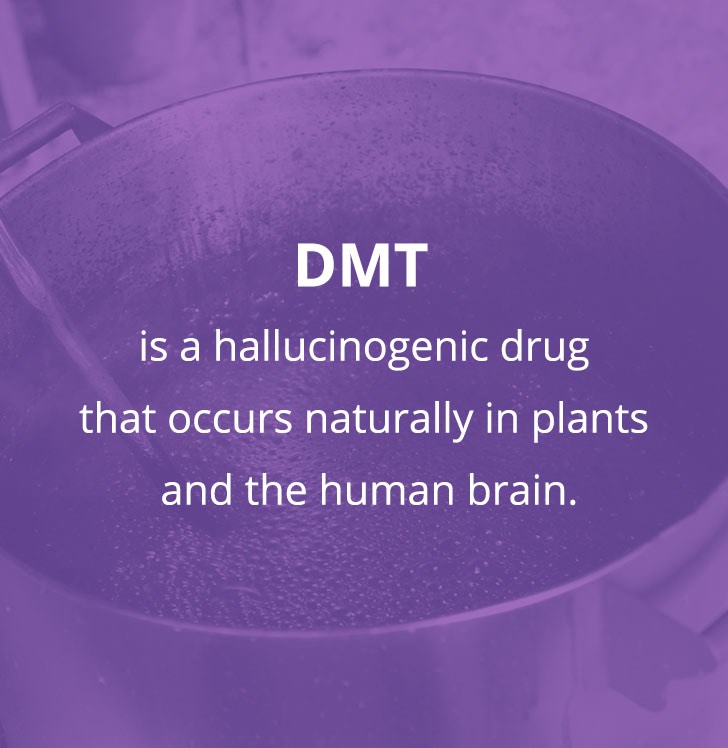

It is a part of the normal makeup of humans and other mammals marine animals grasses and peas toads and frogs mushrooms and molds and barks, flowers, and roots.” In his book, DMT: The Spirit Molecule, he writes that DMT “exists in all of our bodies and occurs throughout the plant and animal kingdoms. However, although this hypothesis has yet to be confirmed with scientific evidence, Strassman’s research did produce some striking facts about DMT. Strassman believes that DMT could explain some of the wild imagery described by survivors of near-death experiences as well as those recounting their dreams. The majority of his volunteers reported profound encounters with non-humans and deep spiritual experiences, and Dr. Strassman hypothesizes that when a person is approaching death or possibly even just in a dream state, the body releases relatively large amounts of DMT. Interestingly, based on his extensive research and observations, Dr. Throughout his work, him and his team coined a new rating scale called the Hallucinogen Rating Scale (HRS), which has been widely accepted throughout the international research community - over 45 articles have documented its use as a solid instrument for measuring psychological effects. He took on a five year project to investigate the effects of DMT, and administered about 400 doses of the drug to nearly five dozen heavily pre-screened volunteers. Rick Strassman, a Stanford University graduate with a specialization in psychiatry and psychopharmacology, is the torchbearer behind the idea that DMT is released when we are born and when we die. This study sparked the widespread assertion that DMT occurs in the human pineal gland and is released during dreams as well as at or shortly before birth and death, but the claim still needs to be scientifically verified with further research.ĭr. In 2013, researchers reported finding DMT in the pineal gland of rodents - the pineal gland in the brain produces melatonin (a hormone derived from serotonin) which affects sleep patterns and circadian rhythms. Even further, there are speculations that DMT is released in our bodies when we’re born and when we die, but more work needs to be done to back up the possibility with solid science. However, McKenna is not alone in speculating that DMT has something to do with our dreams. In an interview with the Bodhi Tree Bookstore, McKenna expressed how he believes DMT could play a role in dreaming, partially because “the way a dream melts away is the way a DMT trip melts away.” SEE ALSO: Gazing into Someone’s Eyes Can Cause Hallucinations You can check out a play-by-play of one of his DMT experiences here as McKenna describes a trip as it progresses from seconds to about seven minutes, but he says when the trip wraps up, it’s hard to remember it all.

McKenna, along with many others who have tried the drug, insists that the experience is so surreal that it cannot be accurately translated into words - “In other words, what DMT does can’t be downloaded into as low-dimensional a language as English,” describes McKenna. DMT was so much more powerful, so much more alien, raising all kinds of issues about what is reality, what is language, what is the self, what is three-dimensional space and time, all the questions I became involved with over the next twenty years or so.” Terence McKenna, an ethnobotanist and psychonaut who experimented with the drug 30 to 40 times throughout his career, said in his book The Archaic Revival, “It was really the DMT that empowered my commitment to the psychedelic experience. Researchers speculate the illegal hallucinogen is released in our brains during birth, death, and dreams.ĭimethyltryptamine or DMT, often referred to as the “spirit molecule,” is one of the most intriguing psychedelic substances on Earth - not just because of the wild experiences reported by DMT users, but because there has been research that suggests it is produced in our own bodies.ĭMT users have reported a wide variety of strangely unimaginable experiences, from communicating with aliens in other realms to distorted worldly things, like intelligent cacti and giant insects.


 0 kommentar(er)
0 kommentar(er)
